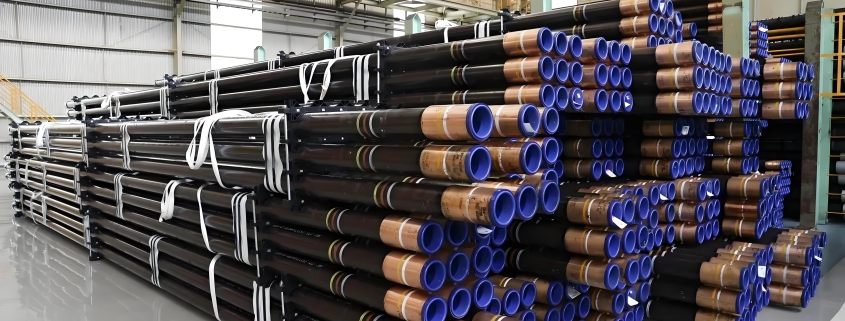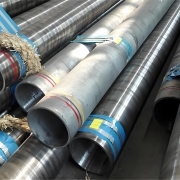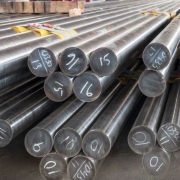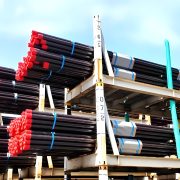9Cr, 13Cr, Super 13Cr, 22Cr e 25Cr em revestimento e tubulação
Introdução
Na indústria de petróleo e gás, selecionar materiais para revestimento e tubulação é crucial para garantir a integridade, segurança e eficiência de operações sólidas. A escolha do material é crítica em ambientes onde a corrosão representa uma ameaça significativa. Este blog se aprofundará nas especificidades de várias ligas resistentes à corrosão (CRAs) comumente usadas em revestimento e tubulação de óleo: API 5CT L80-9Cr, API 5CT L80-9Cr, 13Cr, Super 13Cr, 22Cr e 25Cr. Exploraremos suas propriedades, aplicações e fatores ao selecionar o material apropriado para seu poço.
Compreendendo o desafio: Corrosão em poços de petróleo e gás
A corrosão é um problema generalizado na indústria de petróleo e gás, especialmente em poços com gases corrosivos como CO₂ e H₂S. Esses gases, frequentemente combinados com altos níveis de cloretos, podem levar a várias formas de corrosão, incluindo:
Corrosão uniforme: Perda geral de espessura do metal.
Corrosão por pites e frestas: Formas localizadas de corrosão que criam cavidades ou fendas profundas, podendo levar a falhas rápidas.
Craqueamento por estresse de sulfeto (SSC) e craqueamento induzido por hidrogênio (HIC): Causadas por H₂S, essas são formas críticas de corrosão que podem levar a falhas catastróficas se não forem gerenciadas adequadamente.
Para combater esses desafios, a indústria desenvolveu uma gama de CRAs, cada uma com propriedades específicas adaptadas a diferentes ambientes. Abaixo, examinaremos algumas das CRAs mais comumente usadas.
API 5CT L80-9Cr: A solução econômica para ambientes com CO₂ moderado
API 5CT L80-9Cr é uma liga de aço inoxidável martensítico com teor de cromo 9%. É usado principalmente em poços onde a corrosão por CO₂ é uma preocupação, mas os níveis de H₂S são baixos a moderados.
Propriedades principais:
Resistência à corrosão: Oferece boa resistência à corrosão por CO₂, mas é menos eficaz em ambientes com alto teor de H₂S.
Força mecânica: Oferece um bom equilíbrio entre resistência à corrosão e resistência mecânica, tornando-o adequado para profundidades e pressões moderadas.
Custo-beneficio: Uma opção mais econômica do que ligas de alto grau, o que a torna uma escolha popular para poços onde as condições de corrosão não são excessivamente severas.
Formulários:
Poços com níveis moderados de CO₂.
Ambientes onde o conteúdo de H₂S é baixo ou o SSC não é uma preocupação primária.
API 5CT L80-13Cr: O padrão da indústria para poços doces
API 5CT L80-13Cr é amplamente utilizado na indústria de petróleo e gás, particularmente para poços “doces” com alto teor de CO₂, mas baixo H₂S. Com cromo 13%, esta liga oferece resistência à corrosão aprimorada em comparação com 9Cr, tornando-a adequada para uma gama mais ampla de ambientes.
Propriedades principais:
Resistência à corrosão: Excelente resistência à corrosão por CO₂ e resistência moderada a cloretos. Eles limitam a capacidade de serviço ácido.
Soldabilidade: Requer controle cuidadoso durante a soldagem para evitar a formação de fases quebradiças.
Propriedades mecânicas: Semelhante ao 9Cr, mas com melhor resistência à corrosão, permitindo o uso em ambientes mais agressivos.
Formulários:
Poços doces com alto teor de CO₂ e baixo teor de H₂S.
Em ambientes com níveis moderados de cloreto, corrosão por pites e frestas pode ser uma preocupação.
Super 13Cr: Resistência aprimorada para condições mais agressivas
Super 13Cr é uma versão avançada do aço inoxidável 13Cr projetada para oferecer resistência superior à corrosão em ambientes mais desafiadores. Com resistência melhorada a cloretos e H₂S, é adequado para poços que apresentam um perfil de corrosão mais agressivo.
Propriedades principais:
Resistência à corrosão aprimorada: Melhor desempenho em ambientes com níveis mais altos de cloreto e H₂S moderado.
Resistência: Resistência melhorada em relação ao 13Cr padrão, tornando-o adequado para condições mais extremas.
Versatilidade: Pode ser usado em ambientes doces e levemente ácidos, oferecendo flexibilidade na seleção de materiais.
Formulários:
Poços com níveis moderados a altos de CO₂ e H₂S.
Ambientes onde o risco de corrosão por pites e frestas é elevado.
22Cr: A solução duplex para ambientes ácidos e ricos em cloreto
22 Cr é um aço inoxidável duplex contendo cromo 22%, oferecendo uma combinação equilibrada de resistência e resistência à corrosão. Sua microestrutura duplex (uma mistura de fases austeníticas e ferríticas) lhe dá resistência superior a pitting, corrosão por frestas e SSC.
Propriedades principais:
Força elevada: A estrutura duplex proporciona maior resistência mecânica, permitindo paredes mais finas e componentes mais leves.
Excelente resistência à corrosão: Adequado para ambientes com alto teor de cloreto e serviço moderadamente ácido (H₂S).
Custo-beneficio:Embora seja mais caro que o 13Cr, o 22Cr oferece um bom equilíbrio entre desempenho e custo, o que o torna uma escolha popular para muitas aplicações offshore e em águas profundas.
Formulários:
Poços ácidos com alto teor de cloreto.
Poços offshore e em águas profundas onde a resistência mecânica e a resistência à corrosão são essenciais.
25Cr: O aço inoxidável super duplex para as aplicações mais exigentes
25 Cr, um aço inoxidável super duplex com cromo 25%, é o material ideal para os ambientes de petróleo e gás mais exigentes. Ele oferece resistência à corrosão incomparável, particularmente em condições de serviço com alto teor de cloreto e ácido, tornando-o ideal para poços de águas profundas e de alta pressão/alta temperatura (HPHT).
Propriedades principais:
Resistência superior à corrosão: Excelente resistência à corrosão por pites, corrosão por frestas e corrosão sob tensão em ambientes agressivos.
Alta Resistência Mecânica: A estrutura super duplex permite componentes mais finos e leves sem sacrificar a resistência.
Confiabilidade: Oferece um alto nível de confiabilidade em ambientes extremos, reduzindo o risco de falhas e o tempo de inatividade associado.
Formulários:
Poços de águas ultraprofundas com altos níveis de CO₂, H₂S e cloreto.
Poços HPHT onde tanto a resistência à corrosão quanto a resistência mecânica são críticas.
Selecionando a liga certa: um guia prático
A escolha da liga adequada para revestimento e tubulação depende de uma compreensão completa do ambiente saudável e das condições operacionais. Aqui está um guia prático para ajudar você a tomar uma decisão informada:
Avalie o ambiente corrosivo: Avalie os níveis de CO₂, H₂S e cloreto. Isso ajudará a determinar a resistência à corrosão necessária.
Considere os requisitos mecânicos: Determine a profundidade, a pressão e a temperatura do poço para entender as demandas mecânicas do material.
Equilibre Custo e Desempenho: Ligas de grau mais alto oferecem melhor desempenho, mas também têm um custo mais alto. Equilibre o desempenho do material com o orçamento do projeto.
Confiabilidade a longo prazo: Considere a confiabilidade de longo prazo e os custos de manutenção de cada material. Custos iniciais mais altos podem ser justificados pela manutenção reduzida e vida útil mais longa.
Consulte Normas e Diretrizes: Siga os padrões da indústria, como NACE MR0175/ISO 15156 para serviço de ácido para garantir conformidade e segurança.
Conclusão
Na indústria de petróleo e gás, selecionar materiais de revestimento e tubulação é uma decisão crítica que impacta a segurança, eficiência e lucratividade de operações saudáveis para petróleo. API 5CT L80-9Cr, API 5CT L80-13Cr, Super 13Cr, 22Cr e 25Cr oferecem propriedades únicas adaptadas a diferentes ambientes corrosivos e condições operacionais. Ao avaliar cuidadosamente as necessidades do seu poço e seguir as diretrizes descritas acima, você pode escolher a liga que fornece o melhor equilíbrio entre resistência à corrosão, resistência mecânica e custo-benefício.
Garantir a seleção correta do material aumenta a segurança e a confiabilidade das suas operações e contribui para o sucesso geral e a longevidade dos seus poços.







